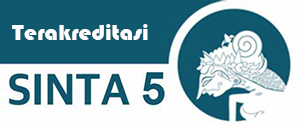Wujudkan Generasi Milenial Bebas Stunting dengan Deteksi dan Intervensi Dini Status Gizi Remaja
DOI:
https://doi.org/10.35309/dharma.v3i1.29Keywords:
Youth, Stunting, Nutritional StatusAbstract
Stunting is a condition of failure to thrive in toddlers due to chronic malnutrition in the First 1000 Days of Life (HPK). This is partly due to the health quality of children and adolescent girls who do not get a balanced nutritional intake, in this case are adolescent girls who have anemia due to iron deficiency. Recently many foods are high in sugar and fat, but low in fiber and this is liked by children and adolescent girls, even though these foods can cause obesity and increase the risk of Non-Communicable Diseases (NCDs). The quality of adolescent girls health is the key in preventing stunting. Stunting is a problem that cannot be solved in one way, but must be solved at all levels, especially by improving the quality of adolescent girls who will give birth to the next generation. This community service aims to increase the knowledge of adolescent girls about nutrition fulfillment and indicators of nutritional status assessment by calculating BMI (Body Mass Index). The method used in this activity begins with the provision of material and discussion, ending with an oral evaluation. After that, the nutritional status of adolescent girls was categorized based on the calculation of BMI. The results of the activity showed that adolescent girls with normal nutritional status were 67.6%, underweight 20.6%, overweight 8.8% and obese 3%.
Keywords: Youth, Stunting, Nutritional Status
Downloads
Downloads
Published
How to Cite
Issue
Section
License
Copyright (c) 2022 Dharma: Jurnal Pengabdian Masyarakat

This work is licensed under a Creative Commons Attribution-ShareAlike 4.0 International License.





